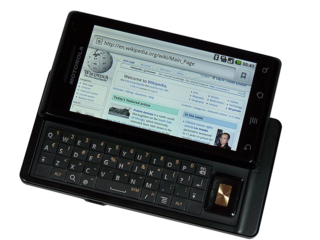
The Motorola Droid is an Internet and multimedia-enabled smartphone designed by Motorola, which runs Google's Android operating system. The Droid had been publicized under the codenames Sholes and Tao and the model number A855. In Latin America and Europe, the model number is A853 (Milestone), and in Mexico, the model number is A854 (Motoroi). Due to the ambiguity with newer phones with similar names, it is also commonly known as the DROID 1. The brand name Droid is a trademark of Lucasfilm licensed to Verizon Wireless.

CyanogenMod is a discontinued open-source operating system for mobile devices, based on the Android mobile platform. It was developed as free and open-source software based on the official releases of Android by Google, with added original and third-party code, and based on a rolling release development model. Although only a subset of total CyanogenMod users elected to report their use of the firmware, on 23 March 2015, some reports indicated that over 50 million people ran CyanogenMod on their phones. It was also frequently used as a starting point by developers of other ROMs.

The Droid X is a smartphone released by Motorola on July 2010. The smartphone was renamed Motoroi X for its release in Mexico on November 9, 2013. The Droid X runs on the Android operating system, and the latest version supported was 2.3 Gingerbread. It was distributed by Verizon Wireless in the United States and Iusacell in Mexico.
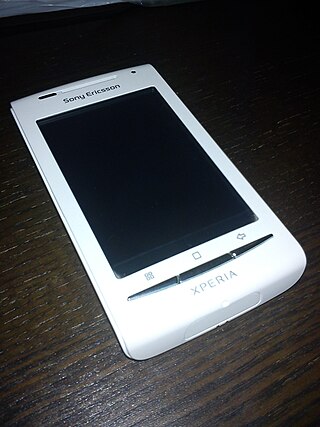
The Sony Ericsson Xperia X8 is a mid-range 3G Android smartphone developed by Sony Ericsson in the Xperia series released in Q4 2010. It was sold in many countries worldwide, including the United States on AT&T Mobility and low-end pay-monthly contracts in the UK. It originally shipped running Android 1.6 but was upgraded in early 2011 to Android 2.1.

The Motorola Droid Bionic is an Android-based, 4G LTE-capable smartphone designed by Motorola. It was originally scheduled for release in Q2 2011 but was delayed, eventually being released on 8 September 2011.

The LG Optimus 2X is a smartphone designed and manufactured by LG Electronics. The Optimus 2X is the world's first smartphone with a dual-core processor and the third phone in the LG Optimus-Android series. LG introduced the Optimus 2X on December 16, 2010 and the device first became available to consumers in South Korea in January 2011. It was also launched in Singapore on March 3, 2011. The Optimus 2X runs the Android 2.3 software version since the upgrade in November 2011, but the latest offering is Android 4.0. The phone holds the record for the longest update holdout, taking 16 months to receive a firmware update from Android 2.2 to 2.3.

The LG Optimus Pad is a tablet computer developed by LG Electronics for its own line-up and for specific mobile carriers in selected countries. Mobile carries include NTT DoCoMo and T-Mobile which unlike its domestic rival, Samsung offering the same tablet model for specific carriers, LG does not alter the specs of those they release to these carriers and the only alteration is on the addition of the mobile carriers logo on it. The LG Optimus Pad was first released in South Korea in April 2011 and then in the US in March 2011 which is also known as the T-Mobile G-Slate. It is LG's first device running Android 3.0 ("Honeycomb") and appeared at the Mobile World Congress in February 2011.

The Motorola DROID 3 is a smartphone released on July 7, 2011, by Verizon Wireless running the Android 2.3 operating system by Google. It comes with 16 GB of internal storage. The smartphone does not ship with a microSD card. It has a 4-inch qHD display and an 8-megapixel camera capable of recording 1080p video. Unlike the DROID 2, the Motorola DROID 3 features a 5-row QWERTY keyboard, with a dedicated number row. It also has a VGA front-facing camera for video calls. The Droid 3 ships with Android 2.3.4 (Gingerbread) with Motorola's updated proprietary Motoblur UI. Like other contemporary Motorola phones, it has a locked bootloader, but it can have a custom rom using SafeStrap.

The Acer Iconia A500 is a tablet computer designed, developed and marketed by Acer Inc. The A500 launched with the Android Honeycomb operating system which is now upgradable to Ice Cream Sandwich 4.0.3. The tablet is also sold in almost identical form as the Packard Bell Liberty Tab G100.
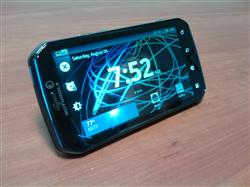
The Motorola Photon 4G was a high end Android-based mobile smartphone that was distributed exclusively by Sprint. A very similar model was available as the Motorola Electrify from U.S. Cellular.
The Samsung Galaxy R (Royal) (GT-I9103) is an Android smartphone that was announced by Samsung on August 10, 2011 as a variant to the Samsung Galaxy S II.
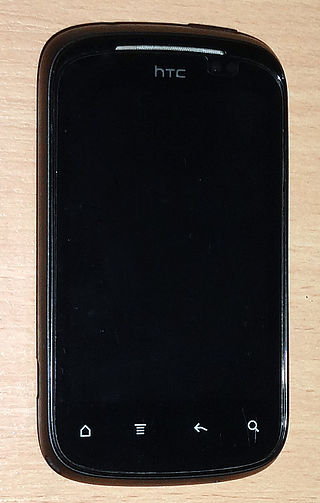
The HTC Explorer, code-named Pico, is a smartphone developed by the HTC Corporation that was released in October 2011. Because of the low end processor, the HTC Watch movie rental service and the 3D scrolling effects on the home screens were not available. The handset was available in four varieties of color options. Visually similar to the HTC Wildfire S, it comes with a 3.2-inch screen, a 600 MHz ARMv7 Qualcomm Snapdragon processor and runs Android version 2.3 (Gingerbread), bundled with the proprietary HTC Sense 3.5 user interface.

The Verizon Droid Razr is an Android-based, 4G LTE-capable smartphone designed by Motorola that launched on Verizon Wireless on November 11, 2011. It was announced on October 18, 2011 in New York City.

The Samsung Captivate Glide (SGH-i927) as it is called in the United States, and sold as the Samsung Galaxy S Glide (SGH-i927R) in Canada, is the first physical QWERTY Galaxy S class smartphone running under the Android operating system to be released by Samsung for AT&T (US) and Rogers Wireless (Canada).

The Motorola ATRIX 2 is a high end Android-based smartphone by Motorola. Originally announced on October 11, 2011, it is the successor to the Atrix 4G. This phone was succeeded by the Motorola Atrix HD.

The Motorola Droid 4 (XT894) is a smartphone made by Motorola Mobility. It was released with Android 2.3 and can be upgraded to Android 4.1. It was released on Verizon Wireless's network on February 10, 2012. It is the successor to Motorola's Droid 3, and is one of the first smartphones to support GLONASS in addition to GPS.

The LG Optimus 4X HD is a slate, multi-touch smartphone running the Android operating system. Designed and manufactured by LG Electronics. The Optimus 4X HD was the world's first smartphone announced with a quad-core processor along with the HTC One X and the Samsung Galaxy S3 and the fourth phone in the LG Optimus-Android series. LG first introduced the LG Optimus 4X HD at Mobile World Congress. The Optimus 4X HD was launched with Android 4.0 Ice Cream Sandwich. Since April 2013, some variants have had a Jellybean update available.
The Motorola Photon Q 4G LTE (XT897) is a smartphone manufactured by Motorola which runs on Sprint's 4G LTE network. The "Photon Q" has a 4.3-inch touchscreen and a 1.5 GHz dual-core processor. It runs the Android operating system and includes a built-in, sliding keyboard similar to the one on the Motorola Droid 4.

The Xiaomi Redmi 1S, code-named armani HM 1S, is a smartphone released in May 2014, developed by the Chinese company Xiaomi Inc. It is a part of the Redmi series of smartphones, and succeeded the Redmi 1. Visually similar to its predecessor, it comes with a 4.7-inch screen, a quad-core 1.6 GHz Cortex-A7 processor and runs Android version 4.3 (Jellybean), bundled with the proprietary MIUI v5 user interface, which can be upgraded to MIUI v9 based on Android 4.4.4 KTU84P.
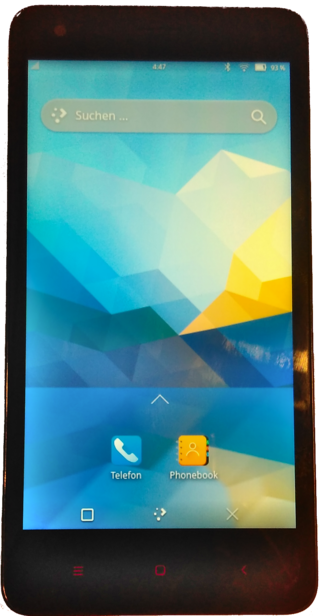
Xiaomi Redmi 2 is a smartphone produced by Xiaomi released in January 2015. It is the successor to the Xiaomi Redmi 1 family.



















